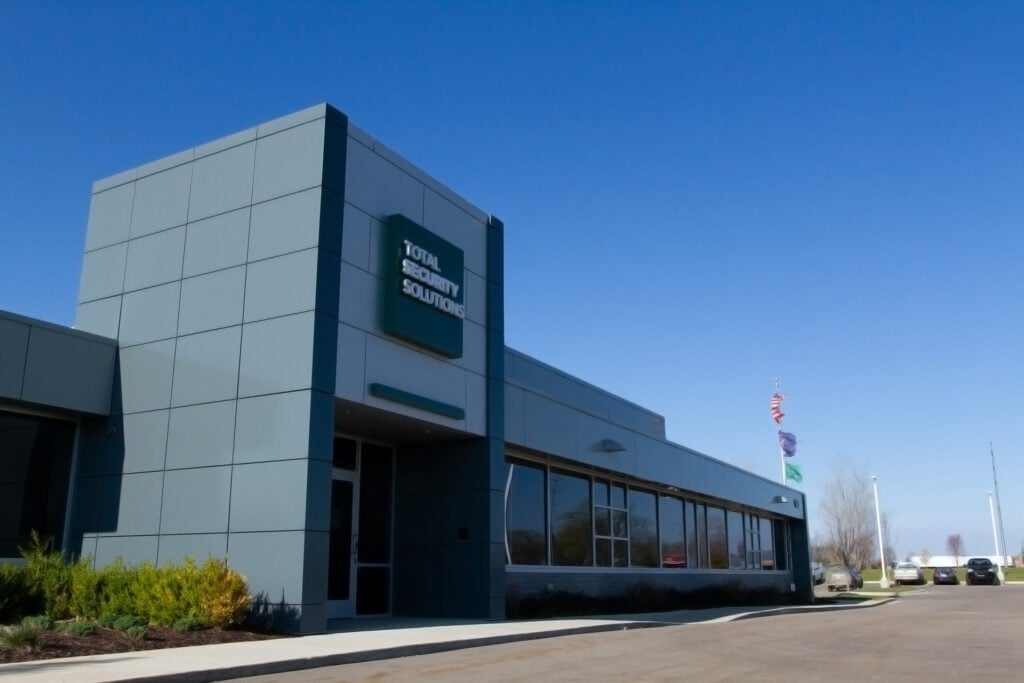Protect inmates in jails or patients at behavioral health centers from harming themselves or your staff. Our polycarbonate detention center glazing is tested to meet the industry standards for forced entry protection.
Detention Center Glazing

What Is Detention Center Glazing?
Detention center glazing is a specialized form of security glazing designed to withstand sustained attacks from blunt and sharp objects. Unlike traditional glass, our laminated polycarbonate glazing will not fracture into dangerous shards, making them safer for staff and occupants. It’s ideal as an alternative to conventional prison window glass, behavioral center windows and doors, visitation centers, interview rooms, and other high-risk areas.
Key Features
- Tested to ASTM F1915 for detention-grade performance
- Tested to ASTM F1233 for multi-staged forced-entry resistance
- Meets UL 752 Levels 1 for bullet resistance
Common Applications
- Prison and jail cell doors and windows
- Visitation and interview rooms
- Control rooms and corridors
- Behavioral health facilities

How Much Does Detention Center Glazing Cost?
The cost of detention glazing depends on the scope of the project, including the size of the installation and the number of windows or doors that require protection. While a single laminated polycarbonate window starts around $2,000, most projects involve multiple windows as well as doors and framing systems. Because every facility has unique layouts, compliance needs, and security priorities, our team provides custom quotes to ensure your system balances security, aesthetics, visibility and budget considerations.
What Makes Our Security Glazing Unique?
While other providers sell only glazing panels, we deliver complete, custom-engineered systems that include glazing, framing, installation, and expert consultation.
With over two decades of experience and more than 30,000 successful installations nationwide, our detention glazing is backed by a proven process that helps you avoid delays by ensuring your project meets your exact specifications and is installed correctly the first time.

Why Choose Total Security Solutions?
With more than 30,000 buildings protected, Total Security Solutions is the trusted national partner for ballistic and forced-entry protection.
Our trained team can also manage installation or provide consulting and support for your general contractor or glazier. Because everything is managed by our in-house experts, we consistently deliver with the fastest lead times in the industry.
Frequently Asked Questions
What’s the difference between ASTM F1915 and ASTM F1233?
ASTM F1915 focuses specifically on detention environments, testing glazing against blunt, sharp, and fire attacks common in correctional facilities. ASTM F1233 is broader, combining ballistic, forced-entry, and multi-stage attack testing to evaluate how long glazing can delay a breach.
Will the glazing shatter into shards?
No. Polycarbonate does not fracture like glass, eliminating shard hazards for detainees, staff, and patients alike. This specialized security glazing provides maximum protection for correctional facilities, government buildings and other applications.
How long can it withstand forced penetration?
ASTM F1233 does not certify glazing to a single time duration. Instead, it measures resistance across a sequence of tool, thermal, and chemical attacks. Our systems are designed to maximize delay time, giving staff and responders critical minutes to react.
Can detention center glazing be integrated into existing cell doors, windows, or commercial buildings?
Yes. Our team designs security glazing that can be integrated into both new construction and retrofits. Whether you’re reinforcing cell doors and windows, securing visitation centers, or upgrading government buildings and correctional facilities, our solutions provide protection tailored to each facility’s security needs.
Is detention center glazing fire-rated or resistant to other environmental threats?
Yes. Our security glazing can be engineered with fire-rated and abrasion-resistant finishes to withstand potential threats beyond ballistic attacks and forced entry. These features extend the lifespan of your systems while maintaining a clean, professional appearance.
Does bullet resistance or forced entry resistance impact visibility?
No. Laminated polycarbonate combines proven protection with high clarity and visibility, with light transmission ranging from 77-85%. This ensures your staff has clear sightlines, which is critical to protecting inmate, patient and employee safety.
How does TSS handle installation?
As a full-service provider, we are able to handle every aspect of the project, from helping you plan for and specify the materials you need to manufacturing them in-house, delivering and installing them to agreed-upon specifications. Many of our systems are installed within a day, and we often work nights and weekends to minimize disruption. We can also support contractors handling installation themselves, providing guidelines and consulting on any questions they may have.
Physical Security Resources

5 Things To Know About Bulletproof Barriers In Police Stations
Download our police station security checklist to learn about the ballistic features that your facility should include.

ASTM F1233: Security Glazing Test Standards
ASTM F1233 establishes testing protocols for evaluating how security glazing performs under both ballistic attack and forced entry. Learn more about this standard and how to apply it.

The Ultimate Guide to Ballistic Security
Get everything you need to know to plan your bulletproof security project, in one place.

TSS Is Your Trusted Partner for Physical Security
When you need to keep your business and your people safe, TSS is proud to help. We are passionate about equipping teams with the security they need. To learn more, request a free consultation with one of our ballistic experts. We’ll meet with you in a no-strings-attached meeting to learn about your budget, threat level, and goals. We’ll also provide recommendations about how to achieve those goals. We look forward to speaking with you!